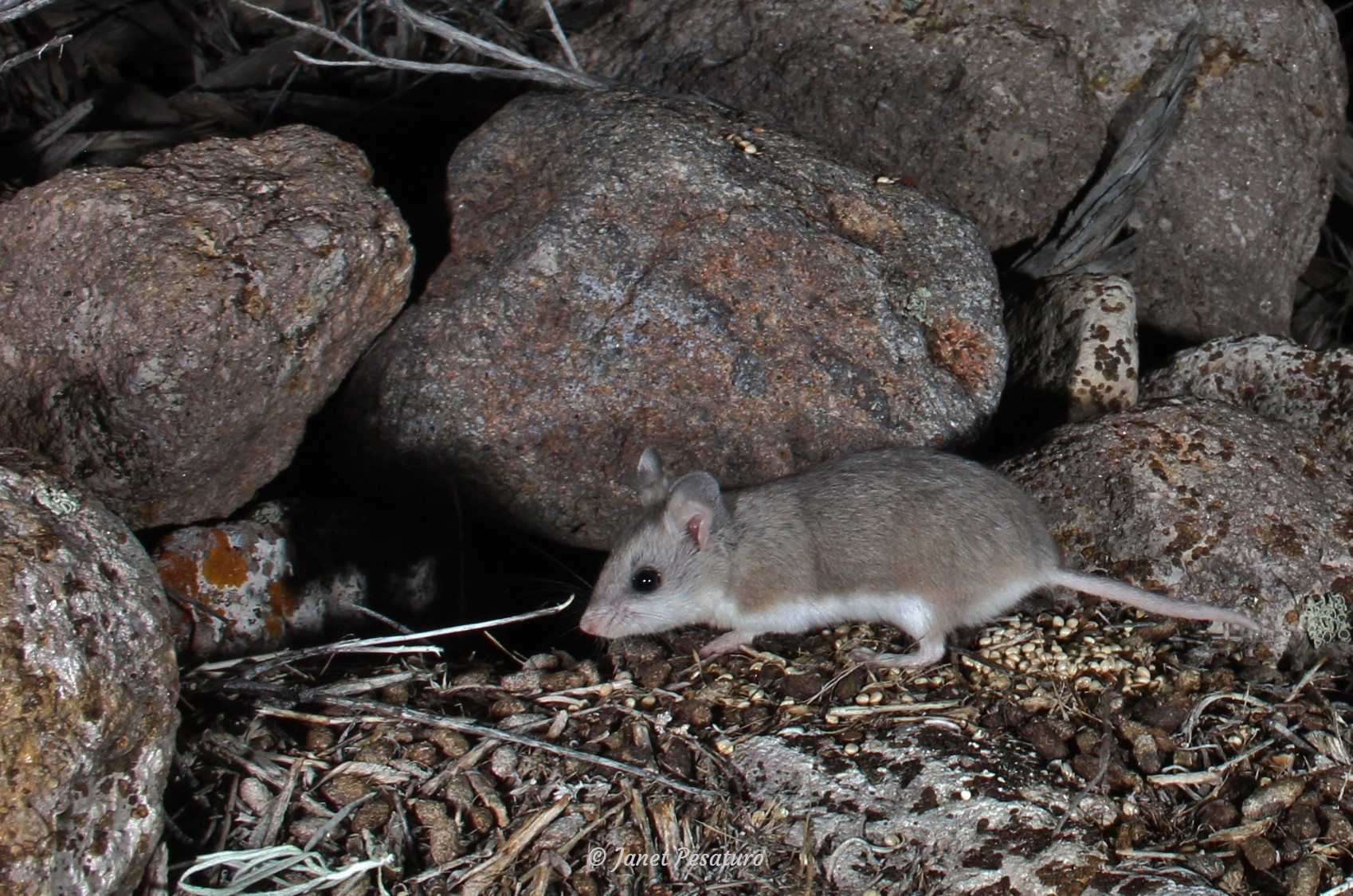Grasshopper Mouse Howling: Trail Cam Audio/Video

Grasshopper mice (Onychomys species) inhabit deserts, shrublands, and grasslands of the western US and Mexico. They look quite like the familiar deermice and house mice, but they have very short tails and their habits are unusual in several ways. The male helps care for the young, and male-female pairs may sometimes associate throughout the year. They communicate with one another and declare territorial ownership by piercing the night with high-pitched whistles emitted while the animal points its nose in the air and opens its mouth, much like a wolf howls. They are also carnivorous, dining on large insects, worms, centipedes, scorpions, and even snakes and small rodents. Their social behavior, method of communication, and predatory nature have earned them the nicknames “wolf mouse”, “wolf rodent”, “howling mouse” and “killer mouse”.
I had the good fortune of catching a grasshopper mouse with a camera trap at two sites. The first was at an old packrat den in Nevada, where I got some photos with both a DSLR camera trap and a trail camera. The animal’s very short tail distinguishes it from other mouse species, as you can see in the photo at the top of this page, as well as in the video below. The second was at a burrow system used by both a packrat and kanagaroo rat in Arizona, and it was at this latter site that I was lucky enough to get a video of a grasshopper mouse “howling”. The video below combines images from both sites. The whistle call is so high pitched that it might be inaudible to some people, so in the video compilation I included both the original clip and a repeat with the speed reduced to 25% of the original. Reducing the speed reduced the pitch; it’s still a whistle but should be audible to most everyone.
Grasshopper mouse howling
Do you have any experience with grasshopper mice? Have you ever seen one “howl”? Feel free to share your observations, thoughts, and questions in a comment below.
Sources
Egoscue, H. J. “Laboratory and Field Studies of the Northern Grasshopper Mouse.” Journal of Mammaology. 41 (1960): 99-110.
Hafner, M. S. and D. J. Hafner. “Vocalizations of Grasshopper Mice (Genus Onychomys).” Journal of Mammalogy. 60 (1979): 85-94.

Very interesting and educational Janet! I’d not heard of a grasshopper mouse before so I learned to recognize some of the unique characteristics that differentiate them, and I learned that I was unable to hear the unique howl until you slowed the tape down. Thank you for all you’re doing to expand my world and my knowledge!
I’m so glad you found it interesting! They are super cool little creatures and I first learned about them only about a year ago. That high pitched howl seems to be just on the cusp of the human range. Some people can hear it and some can’t.
Wow- very cool. Thanks for sharing the video and explanation. Gives me an alternate visual for Mighty Mouse ?
Hahaha…Mighty Mouse would yet another apt nickname!
Glad I found your site. These do so much look like the pet hamster – Chinese Hamster. I had one and looking at her pictures and these Mice, they look so alike.
Oh how interesting. Do Chinese hamsters howl/whistle like grasshopper mice?
when I first heard a grasshopper mouse in the wild, I thought I was having a bout of tinnitus. Only when out camping w/ fellow biologists and they asked if I heard the grasshopper mouse did I finally realize it wasn’t my ears having an ‘episode’… I was actually hearing the wolf of the mouse world.
Funny and interesting! If I heard it in the wild, I probably would have thought the same thing, as I do get tinnitus frequently.
Pingback:Trail Camera Noise: Part 2 - Ultrasonic Squeals - Winterberry Wildlife